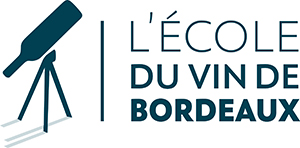What is mobile learning? Mobile learning (or mlearning) is the use of mobile devices to access learning content, allowing users to learn at their own pace, in their own time. Mlearning should not to be confused with responsive elearning. Responsive elearning is content that is designed to work on both desktop computers and on devices with smaller displays and touch screen interfaces. Although responsive elearning offers compatibility, in most cases the content has been designed with desktop users in mind.
WHAT ARE THE benefits OF MOBILE LEARNING?
Mlearning is specifically designed for smart phones and devices, and should create a more dynamic experience.
The content is often asset-based and can sometimes be delivered through bespoke apps. It is usually divided into smaller chunks, enabling learners to quickly complete activities on the go in real time. In comparison, traditional elearning courses are mostly designed for longer sessions on a desktop computer or laptop.
Mlearning is a growing trend in the industry at the moment, and can be very effective when used correctly. It also aligns well with microlearning, which is becoming increasingly popular. It gives users the means to quickly access their small microlearning activities when they have some free time.
The flexibility of learning on the go rather than in one physical location, along with the convenience of using a personal mobile device is appealing to millenials and tech-savvy learners. Younger people have been raised with technology and are accustomed to searching out the information they need on their smartphones.
Learners consume information very differently on mobile than on a desktop. Generally users will interact with mobile devices such as smartphones for a shorter period of time than a desktop computer, and are more likely to have time constraints. We use our devices at times when we are not occupied with larger tasks, such as during commutes or after work to send text messages and browse apps.
Mlearning will mostly be accessed outside of the office environment. For this reason it can work well for just-in-time learning, where a user needs to find relevant information at a specific time or place. One of our latest arrivals, Teach on Mars is designed for mobile and is perfect for those employees on the move or who don't work in an office environment:
Mlearning offers fast, intuitive courses. Giving learners the option to learn using their personal devices can be motivational. It allows them to complete the tasks outside of their regular working hours, in less distracting environments. One study showed that 70% of users felt more motivated to learn using a mobile device rather than a desktop computer.
Making elearning mobile increases engagement by mirroring apps and mobile technology that people use on a daily basis, such as social media, streaming services or online stores. This encourages learners to engage with the training as it seems more familiar and less complicated than learning new software or tackling a difficult LMS.
This teaching process is suitable for short topics that can be absorbed quickly, and on-demand. It can also be used as part of a larger blended learning strategy. For example you might support a suite of elearning topics with mobile-delivered microlearning for reinforcement and performance support. As this infographic shows, learning doesn't always happen at your desk:

How to design mobile learning
Find out what devices your learners will be using
You should try to find out as much as possible about which devices your target audience are likely to be using. Will they be issued with company tablets or are they expected to use their own devices? Your mlearning should work on as many devices as possible but if you discover that all learners will be using tablets you can design the content accordingly.
Simplicity is key for mlearning
Mlearning content should focus on bitesize topics and simple objectives. Writing should be concise, and should avoid lengthy paragraphs. Large blocks of text will put off learners using a smaller display.
The most important information should come first, so if a learner is interrupted and cannot finish the activity they have still seen the main points. The ‘nice to know’ information should lead on from this. Ideally, each concept should fit on to a single mobile screen.
The topics should be divided into short activities, no longer than 10 minutes.
Select the right content for mobile
Not all of your content will translate well to mobile. You should be strategic when deciding what messages will work best for mlearning. Concepts that can be digested quickly or short, fun activities will work better than very detailed corporate training or lengthy formal assessments.
Microlearning, gamified activities, short videos and scenario-based learning will all work well on portable devices.
Find the right tools
There are some great elearning development tools now available for creating mobile activities. These tools range from modern authoring tools that offer responsive design to learning apps that offer microlearning activities and spaced learning.
Embrace scrolling
The traditional ‘click next’ style of elearning can be awkward to use on portable devices. Learners will find it much easier and intuitive to scroll vertically through the sections. We browse websites and apps by scrolling vertically on our devices so this will feel comfortable for users.
Give learners the best user experience possible
Where as desktop users have a mouse and keyboard to interact with their learning, mobile users are usually restricted to two thumbs or their finger for navigation. For this reason you should avoid complex interactions with a lot of clicks. Drag and drops with lots of objects do not make for a good user experience on mobile displays.
Clickable areas should be large enough to tap with your thumb or finger. Smaller items like navigation menus or text links can be tricky to tap on touchscreen devices.
Navigation needs to be as simple as possible. It is very easy to overcrowd a small mobile display, so menus and navigation should be kept to a minimum. Buttons and instructions should be very clear.
Optimise everything for mobile
Optimisation is always important for any web-based learning, but this is especially true of mlearning. Learners have limited time and will not wait a long time for content to load. They may also be using a slower connection than usual if they are not at home or in the office. Learning materials designed for great mobile experiences have ‘offline’ functionality. A learner can download the entire course, complete the content when offline; maybe when travelling, and then sync their data with the learning platform when they go online again.
Images and videos should be highly optimised to minimise loading times. You should ensure that content loads within a few seconds even on slower connections.
Encourage collaboration between designers and IDs
A designer will often have a better feel for how content will look on a smaller display. They may need to help an Instructional Designer understand this, and adjust the content accordingly. It might help to share some interesting mlearning examples with your team and ask them to complete them using their own devices.
Rearranging some of the sections or cutting down a large paragraph could make a big difference to the end user experience. As we said earlier in this post, mlearning should be more than just mobile responsive eLearning.
Here are some interesting mobile elearning examples:
The Oenobordeaux app teaches anyone interested in wine, from an importer to a home enthusiast, about the heritage and reputation of Bordeaux wines. You can also download the app for yourself (go here for iOS and here for Android).

Contact us to explore the advantages mobile learning can offer with Teach on Mars, or to discuss any of our other solutions and services.
Links in this article:
https://logicearth.com/microlearning
https://logicearth.com/teach-on-mars
https://www.learndash.com/7-random-mobile-learning-stats
https://blog.logicearth.com/scenarios-in-elearning-a-case-of-best-not-worst
https://logicearth.com/microlearning
http://blog.logicearth.com/talking-ids-spaced-repetition
https://apps.apple.com/us/app/%C5%93nobordeaux/id1210056846
https://play.google.com/store/apps/details?id=com.civb.oenobordeaux&hl=en











Was this article helpful?